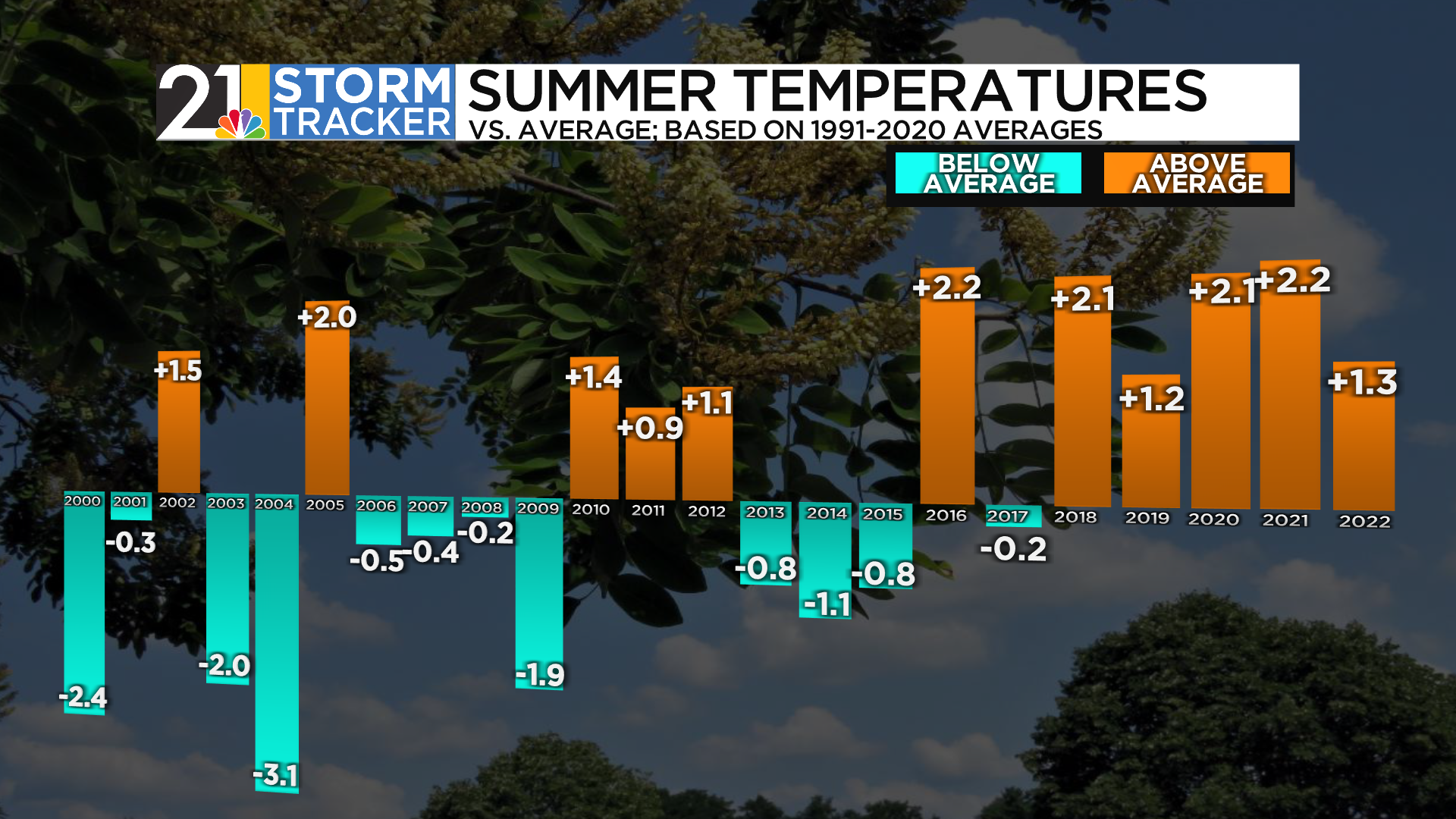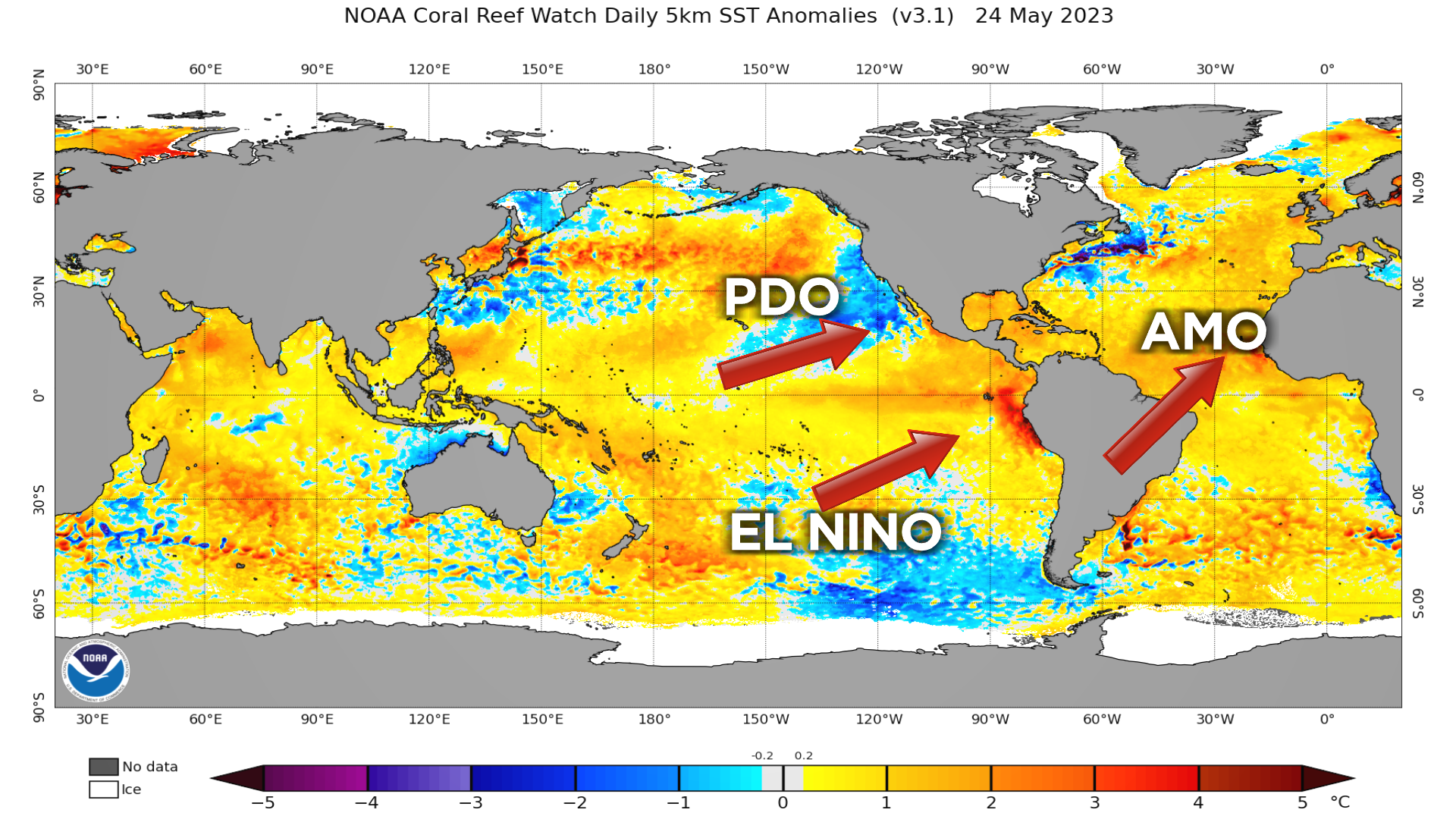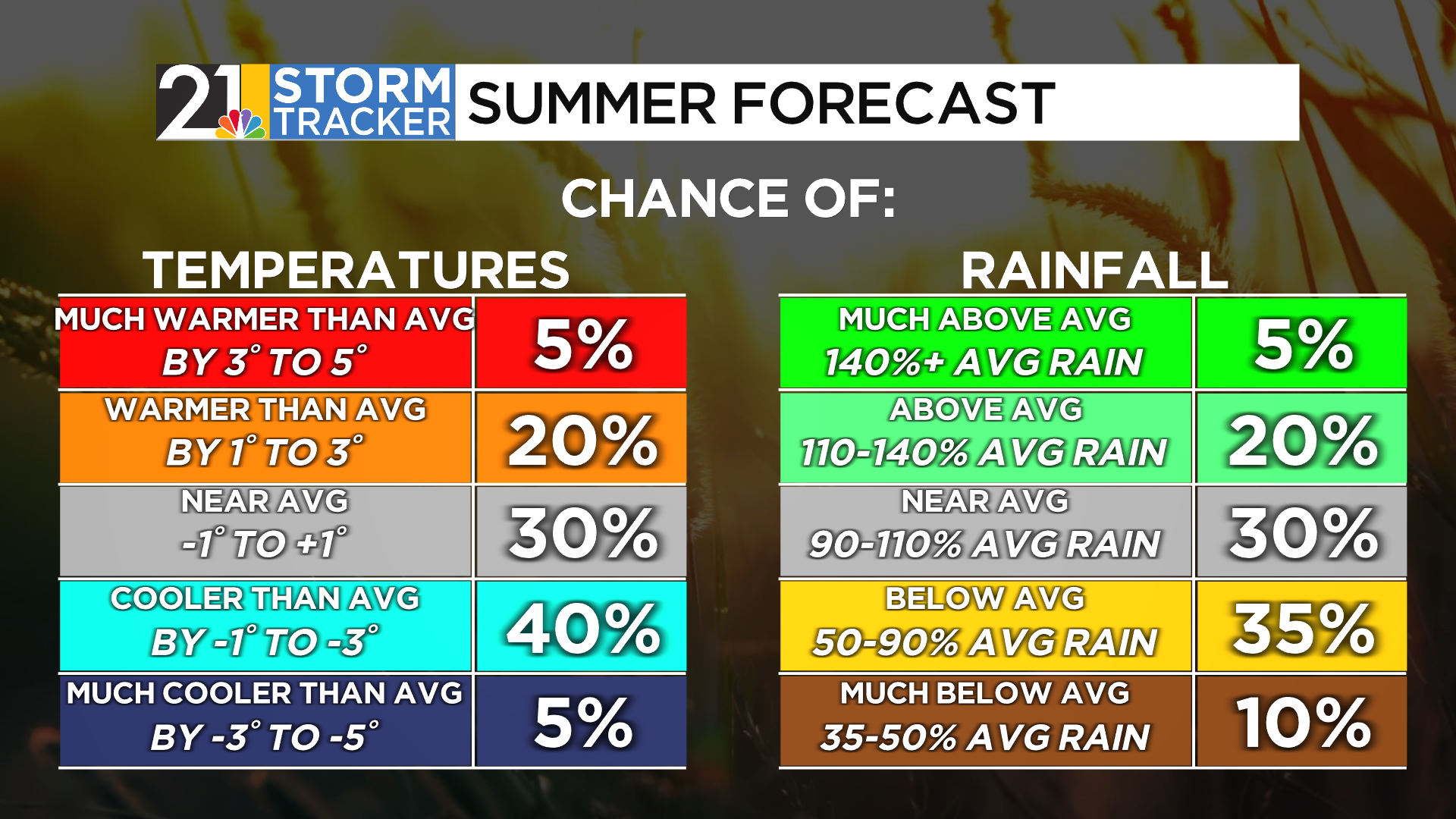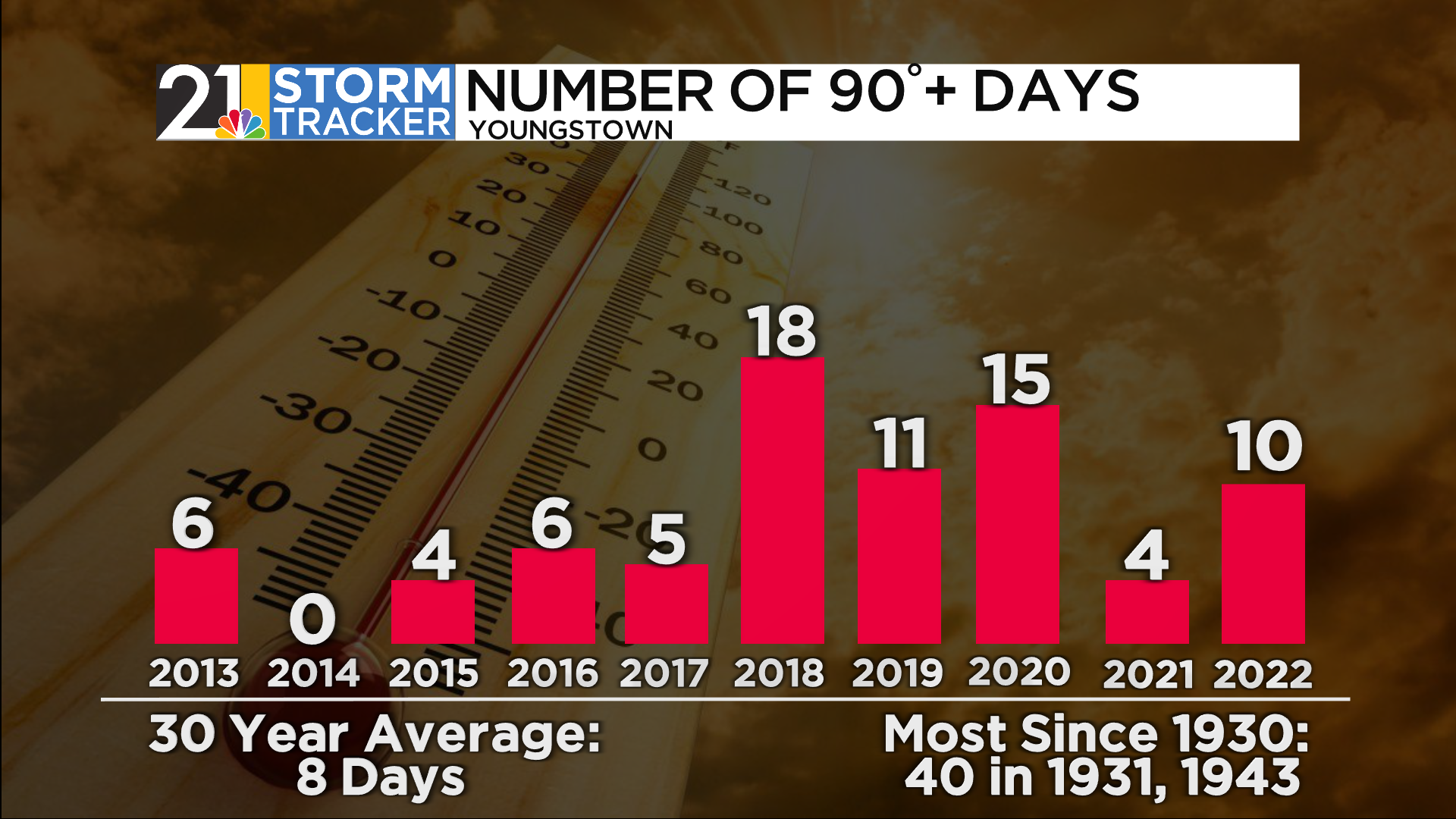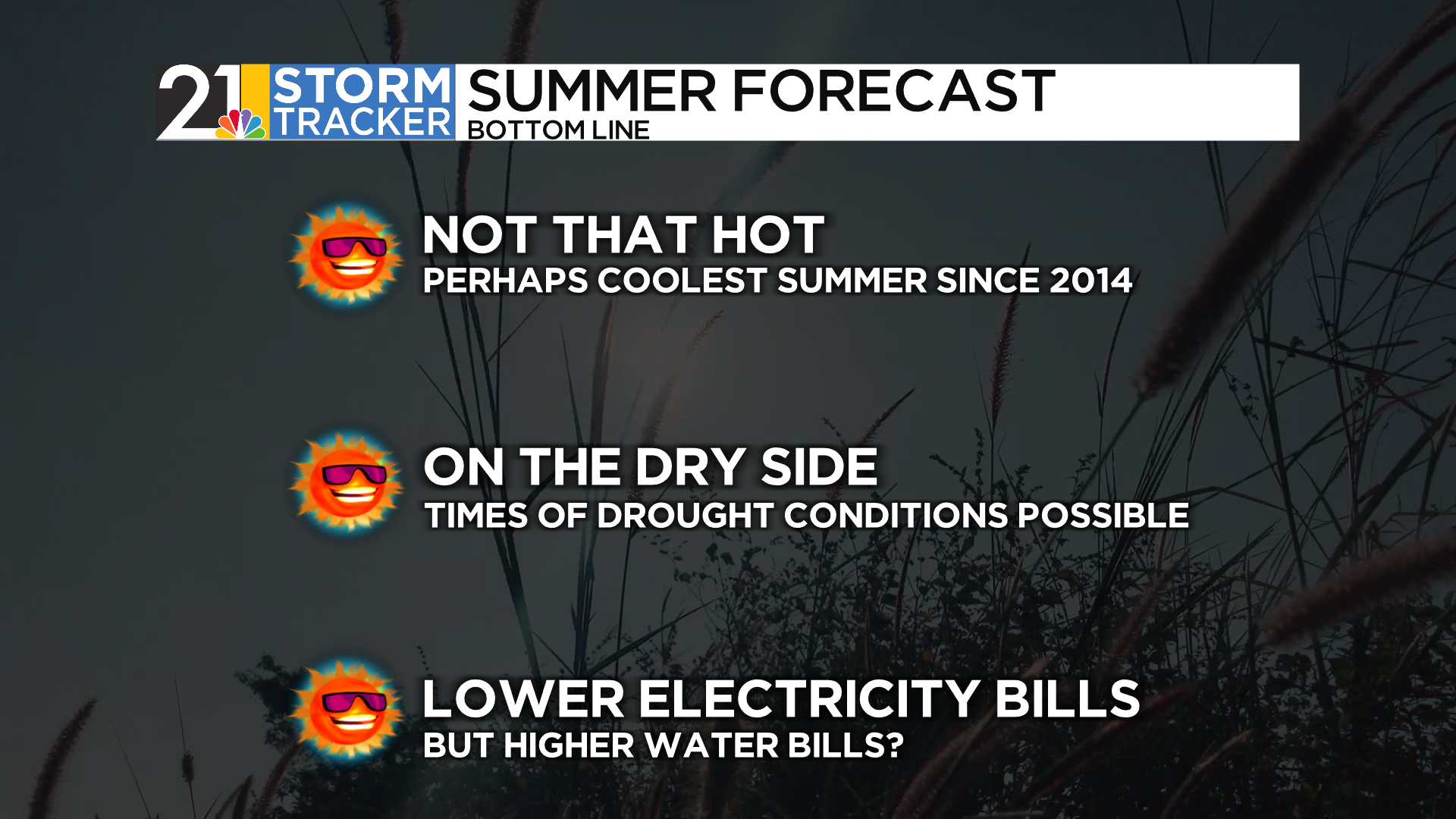The 2023 Summer Forecast
WILL THIS SUMMER BE DIFFERENT THAN RECENT SUMMERS?
In eastern Ohio and western Pennsylvania, meteorological summer (June-August) has been 1) warm and 2) wet more often than not in recent years. Of course, it gets hot and we have rain every summer. But compared to average, wet summers have outnumbered drier ones…and we haven’t had a legit “cool” summer in nearly a decade.
As noted in the graphic above, it got pretty dry in summer 2022. Our viewing area was never put in the “drought” category, but we spent a fair amount of July and August under the “abnormally dry” designation.
As you may know from our annual winter outlooks, we spend a lot of time looking at ocean water temperatures when constructing these seasonal forecasts. Our focus for this forecast is:
1) The emerging El Nino. We have spent 3 straight years under the influence of La Nina, which is of course the opposite of El Nino. La Nina is not only long gone, but El Nino is coming on hot and heavy. Historically, there have not been many cases where La Nina gives way to El Nino so quickly …so this is a fairly unusual situation.
El Nino is the warming of the waters in the equatorial Pacific. This can impact the jet stream and weather patterns downstream.
2) The Pacific Decadal Oscillation, or PDO. It’s still in a ““negative” state, where the water is cooler than average off the west coast of North America. A negative PDO does not often occur in concert with an El Nino…and, if it were to stay negative, could counteract some of the typical impact from El Nino. BUT, there are signs the water is warming significantly in this zone. If that trend continues, as it should, El Nino will have more influence on the North American Summer.
3) The Atlantic Multidecadal Oscillation, or AMO. The Atlantic Ocean is very warm right now, or in the “positive” phase of the AMO. A Positive AMO tends to favor drier conditions during the summer in our region.
MAKING THE FORECAST
So given what is going on in the oceans, we can look back at years that had similar conditions. We compile that data and also have a look at the latest computer model projections to construct a forecast for the season. Here’s what we think are the most likely outcomes:
A somewhat cool or “not that hot” summer is favored this year. Precipitation-wise, it may be on the dry side. It would not be surprising to see a drought designation for at least a portion of the area at times this summer.
We average 8 days with highs of at least 90 degrees per year. This year, I suspect the number will be somewhere between 3-6.
The bottom line? While we may save on electricity/air conditioning bills this summer, gardeners and farmers (and those who want an emerald green lawn) may find that the atmosphere will not provide enough natural water.

